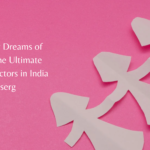India has recently been acknowledged as a pioneer in providing medical care to overseas nationals. India is the destination of over 30% of all medical tourists worldwide. Providing high-quality care is increasingly in demand among medical powerhouses including the United States, Australia, Canada, Japan, Germany, and New Zealand.
This is due to the fact that the majority of its hospitals, particularly private hospitals, are furnished with all current medical technology and highly qualified medical personnel. Indian physicians are renowned for their surgical expertise, which develops over years of education and practise.
Before beginning to offer medical services in India, private hospitals are required to obtain high accreditations and adhere to quality standards like ISO9001. The majority of these institutions have done both.
Cities like Bangalore, New Delhi, Kolkata, Ludhiana, Chennai, Hyderabad, and Ahmedabad are among the most well-known medical hubs in India. All of these cities offer excellent infrastructure, a variety of airline options across the world, and decent living and transportation alternatives.
Why are medical services in India so inexpensive?
India’s low cost of medical care is one of the explanations offered for why it is becoming more and more well-liked as a worldwide medical powerhouse. One can, as was correctly said, spend six months in India, reside in a five-star facility, have treatment, and then return home for a treatment cost that is just about 10% of what he would pay to receive treatment at a subpar hospital in the United States.
We need to look into the factors that allow India to offer medical services at such low prices in order to comprehend this pricing disparity. Contrary to popular belief, postponed treatment quality does not necessarily correlate with low cost.
Exchange Rate Difference
One of the major difference in medical cost comes from currency rate difference. One American Dollar trades for almost Seventy India Rupees.
Lower Cost of Generic Drugs
Therefore, in order to meet the demands of its enormous population, the Government of India has drastically cut the price of most generic medications (mostly where patents have expired). All the innovation benchmarks have been surpassed. In India, they have scaled the same strategy while investing significantly less in these breakthroughs to meet the country’s population’s demand for medical care, compared to the United States, which invests over $8000 per capita in its medical advances.
Model of high demand against supply
The demand flow in India is the second key component to the country’s affordable healthcare costs. Major medical expenses must typically be covered out of pocket by Indian citizens, and major health problems account for over 70% of the country’s ongoing financial woes. Doctors must therefore provide value in their treatments while practising more nimbly in this sub-continent in order to meet this kind of demand.
Hub-and-Skew Diagram
Additionally, rather than having enormous medical facilities in all less populated areas, they establish medical hubs in all big cities. In order to reduce the fixed costs of operating these medical centres, residents of these cities go to these medical hubs to receive all major treatments.
Hospital Operations Standardization
India’s hospitals have a very industrialised and standardised approach. Only the unique operation is performed by the expert doctors; ordinary activities are handled by lower level workers. Additionally, a piece of medical equipment in India would be used fifteen to twenty times per day as opposed to five times per day in an American hospital.
Work Allocation Based on Tiers and Wage Differences
Additionally, salaries for doctors and other medical professionals in India are much lower than those of their counterparts abroad or in the United States. Task distribution is based on tiers. Doctors with extreme specialisation do only specialist procedures. Then, in addition to doctors and nurses, there are numerous paramedic professionals that specialise in ordinary tasks. These are medical professionals with specialised training who have graduated from high school.
Agile Methods
In India, the majority of doctors are paid monthly salary under contracts rather than on a per-procedure basis. India has effectively used the principles of lean manufacturing and mass production to find ways to reduce the costs of providing healthcare.
Conclusion
While the USA and New Zealand may be pioneering new medical procedures for diseases for which we do not yet have a cure, India has excelled in the innovation of most generic therapies by developing generic standard procedures, hence lowering the likelihood of errors.






